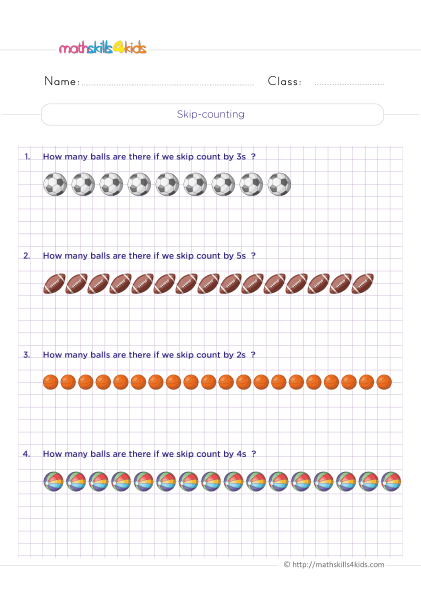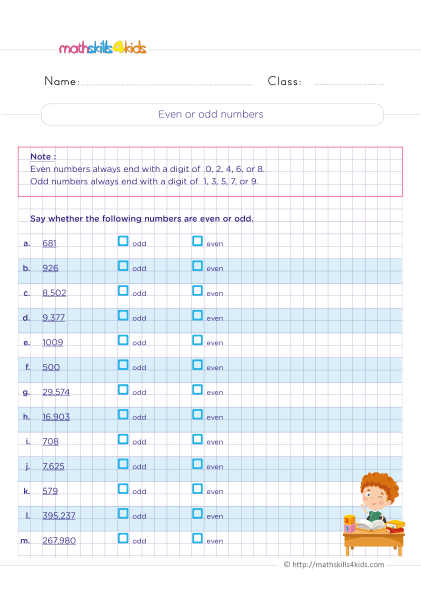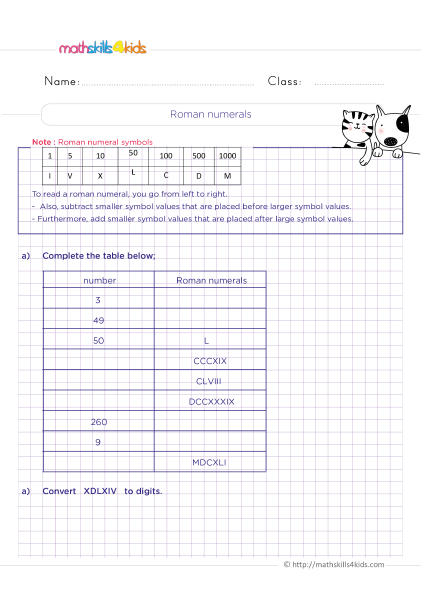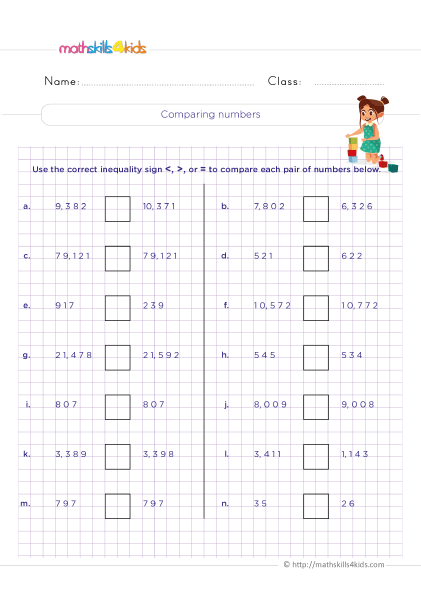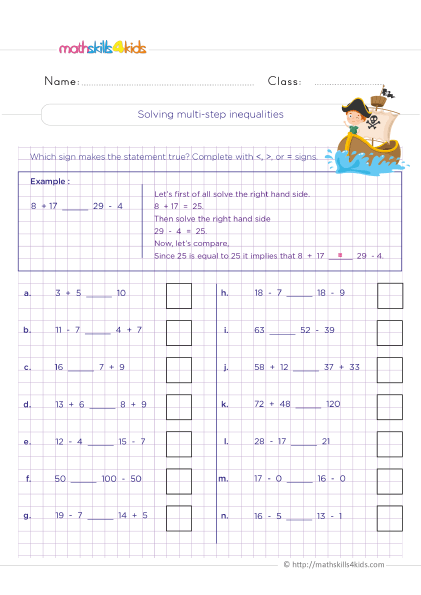Printable 3rd Grade numbers worksheets: Comparing, ordering, and more!
Hello, math lovers! Are you ready to take your 3rd grader's mastering numbers skills to the next level? If so, you are in the right place! Get ready to explore this wonderful world of printable 3rd Grade numbers worksheets from mathskills4kids with your 3rd graders.
-
This article will show how to help your child master the essential skills of comparing and ordering numbers using place values and symbols. We will also share some fun and engaging activities to practice reading, writing, comparing, and ordering numbers at home or in the classroom.
And as a bonus, we will give you access to our amazing collection of free printable 3rd-grade comparing and ordering numbers worksheets that cover various topics and challenges.
So, let's get started!
Why 3rd-Grade numbers worksheets are awesome for your child
Numbers are everywhere in our daily lives. We use them to count, measure, compare, order, and more. Working with numbers is important for math and other subjects and skills, such as science, logic, problem-solving, and creativity. That's why printable 3rd-grade numbers worksheets are awesome for your child.
They help your child develop a solid foundation in number sense and numeracy to serve them well throughout their academic journey and beyond.
-
BROWSE THE WEBSITE
-
DOWNLOAD FREE WORKSHEETS
-
-
3rd GRADE MATH TOPICS
- Number and compapring
- Place value
- Addition
- Subtraction
- Understand multiplication
- Multiplication skill builders
- Multiplication fluency
- Multiplication
- Understand division
- Division skill builders
- Division fluency
- Division practice
- Mixed operation
- Properties
- Equations & variations
- Estimate & rounding
- Logical reasoning
- Patterns
- Money
- Telling time
- Data graph & probability
- Understanding fractions
- Equivalent fractions
- Comparing and ordering fractions
- Operations with fractions
- Unit of measurement
- Two-dimensional shapes
- Triangles and quadrilaterals
- 3D shapes
- Geometric measurement
-
Buying is supporting us!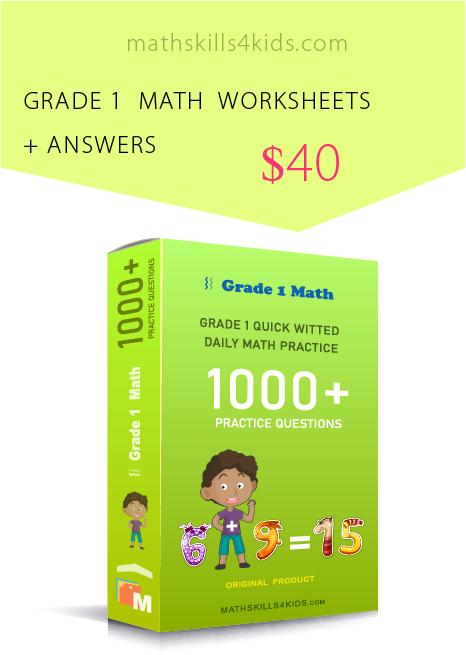
Buy Now...
-
-
How to compare and order numbers using place value and symbols
One of the key skills that your child needs to learn in 3rd grade is how to compare and order numbers using place values and symbols.
Place value is the value of each digit in a number based on its position. For example, in the number 2573, the digit 2 has a place value of 2000, the digit 5 has a place value of 500, the digit 7 has a place value of 70, and the digit 3 has a place value of 1.
To compare two numbers using place value, we start by looking at the digits in the highest place value (the leftmost digit) and see which one is greater or smaller. If they are equal, we move on to the next place value until we find a difference or reach the end of the numbers.
For example, to compare 2481 and 2693, we start by looking at the thousands place. Both numbers have a 2 in the thousands place, so they are equal so far. Then we look at the hundreds place. The first number has a 4 in the hundreds place, while the second number has a 6 in the hundreds place. Since 6 is greater than 4, we can conclude that the second number is greater than the first.
To order two or more numbers using place value, we follow the same process as comparing, but we arrange the numbers from smallest to largest or from largest to smallest depending on what we want.
For example, to order 2481, 2683, and 2896 from smallest to largest, we start by looking at the thousands place. All three numbers have a 3 in the thousands place, so they are equal so far. Then we look at the hundreds place. The first number has a 4 in the hundreds place, while the second and third numbers have a 6 in the hundreds place. Since 6 is greater than 4, we can put the first number at the beginning of our order.
Then we compare the second and third numbers using their tens and ones places. The second number has an 8 in the tens place and a 3 in the ones place, while the third has a 9 in the tens place and a 6 in the ones place. Since 9 is greater than 8 in the tens place, we can put the third number before the second number in our order. So our final order is 2481 < 2896 < 2683.
- symbols for comparing and ordering numbers
To make comparing and ordering numbers easier and faster, we can also use symbols such as < (less than), > (greater than), or = (equal to) to show the relationship between two numbers.
For example:
To show that 2481 is less than 2896, we write: → 2481 < 2896
To show that 2896 is greater than 2481, we write: → 2481 > 2896
To show that two numbers are equal, we write: → =For example:
To show that 3456 is equal to itself, we write: → 2683 = 2683
To show that two different ways of writing the same number are equal, we write: =For example: To show that two thousand six hundred eighty-three is equal to 2683,
we write: two thousand six hundred eighty-three = 2683 - symbols for comparing and ordering numbers
-
Fun and engaging activities to practice reading, writing, comparing, and ordering numbers at home or in the classroom
Now that you know how to compare and order numbers using place values and symbols, it's time to practice! There are many fun and engaging activities that you can do with your child at home or in the classroom to help them master this skill.
Here are some of our favorites:
- Number Bingo: Create a bingo card with different numbers and call out numbers for your child to mark on their card. You can make the game more challenging by using different forms of numbers such as words, expanded forms, or base ten blocks.
For example, you can call out "two thousand four hundred fifty-three," and your child has to find 2453 on their card. The first one to get a bingo wins!
Find online number bingo game here: Number BINGO • ABCya!
- Number War: Use a deck of cards or make cards with different numbers. Shuffle the cards and deal them evenly between you and your child. Each player turns over one card at a time and compares the numbers using place values and symbols. The player with the greater number gets to keep both cards. If the numbers are equal, both players turn over another card and compare again.
The game continues until one player has all the cards or no more cards are left.
Find more about number war game: Number war games 4 – Mathematicsforall
- Number Line Race: Draw a number line on a large piece of paper or use a tape measure or a ruler. Mark numbers on the number line, such as 0, 10, 20, 30, etc. Give your child a set of cards with different numbers and ask them to place them on the correct spot on the number line.
You can also ask them to order the cards from smallest to largest or largest to smallest before placing them on the number line. Using fractions, decimals, or negative numbers can make the game more challenging.
All you need to know about number line race: Sidewalk Chalk Number Line Race (mathgeekmama.com)
- Number Sort: Give your child a set of cards with different numbers on them and ask them to sort them into different categories such as even or odd, multiples of 5, greater than 1000, etc.
You can also ask them to explain why they sorted the numbers the way they did using place value and symbols.
- Number Puzzle: Cut out some pieces of paper with different numbers and mix them up. Ask your child to put them back together to form a larger number.
You can also cut out some pieces of paper with symbols such as <, >, or = and ask your child to use them to make true statements about the numbers.
Find number puzzle challenging game for kids here: Play Arrange Puzzle Game (mathsisfun.com)
- Number Bingo: Create a bingo card with different numbers and call out numbers for your child to mark on their card. You can make the game more challenging by using different forms of numbers such as words, expanded forms, or base ten blocks.
-
MathSkills4Kids.com free printable 3rd-grade comparing numbers worksheets: What you'll get and how to use them
If you are looking for more ways to practice comparing and ordering numbers with your child, look no further than our amazing collection of Mathskills4kids.com free printable 3rd-grade comparing numbers worksheets!
Experts have designed these worksheets to help your child master this skill in a fun and effective way. They cover various topics and challenges to keep your child engaged and motivated. Here are some of the worksheets that you'll get and how to use them:
- Even or odd numbers: This worksheet helps your child identify whether a number is even or odd by looking at its ones place. An even number ends with 0, 2, 4, 6, or 8, while an odd number ends with 1, 3, 5, 7, or 9. Your child has to circle the correct answer for each number.
- Even or odd: Arithmetic rules: This worksheet helps your child apply some arithmetic rules to determine whether a number is even or odd without looking at its ones place. For example, adding two even numbers always gives an even number, adding two odd numbers always gives an even number, adding an even number and an odd number always gives an odd number, etc. Your child has to fill in the blanks with even or odd for each equation.
- Sequences of numbers: Complete the sequence with the missing numbers: This worksheet helps your child recognize patterns in sequences of numbers and fill in the missing numbers.
For example, in the sequence 2, 4, ___, 8, ___, 12, the missing numbers are 6 and 10 because the pattern adds 2 each time. Your child has to write the missing numbers for each sequence.
- Skip-counting: Your child will learn how to skip-count by 2s, 3s, 4s, 5s, 10s, and 100s and how to use this skill to count quickly and efficiently.
- Convert numbers to words: Your child will learn how to write numbers in words using the standard spelling and punctuation rules and how to read and understand numbers written in words.
- Roman numerals: Your child will learn how to read and write numbers in Roman numerals using the symbols I, V, X, L, C, D, and M, and how to convert between Roman numerals and Arabic numerals.
- Comparing numbers: Your child will learn how to compare two or more numbers using place value and symbols (<, >, =), and how to use this skill to order numbers from least to greatest or greatest to least.
- Find the greatest or the least number: Your child will learn how to find the greatest or the least number in a set of numbers using place value and comparison skills and how to use this skill to solve problems and challenges.
- Comparing numbers with addition and subtraction: Your child will learn how to compare two or more numbers by adding or subtracting them and using this skill to estimate sums and differences.
- Putting numbers in order: Your child will learn how to put a set of numbers in ascending or descending order using place value and comparison skills and how to use this skill to organize data and information.
- Solving multi-step inequalities: Your child will learn how to solve inequalities that involve more than one step using addition, subtraction, multiplication, or division, and how to use this skill to find unknown values and compare quantities.
All our comparing and ordering numbers worksheets are designed by experienced math teachers who know how to make learning fun and engaging for kids. They are colorful, attractive, and easy to follow.
They also include answer keys for quick checking and feedback. You can download them free from our website and print them as often as needed.
You can use them at home or in the classroom as homework assignments, practice exercises, review materials, or assessment tools.
-
Best Mathskills4kids 3rd Grade numbers worksheets: Boost your child’s comparing and ordering numbers confidence and success
Our Mathskills4kids 3rd Grade numbers worksheets are specially designed to boost your child's comparing and ordering numbers confidence and success throughout their academic and daily lives.
In the first place, numbers are the foundation of math. By mastering the skills of reading, writing, comparing, and ordering numbers, your child will be able to tackle more complex math topics with ease and confidence.
They will also develop their logical thinking, problem-solving, and reasoning abilities, which are essential for academic success and life skills.
Our 3rd Grade numbers worksheets are designed to help your child achieve these goals by providing them with plenty of practice opportunities that are fun and challenging. They will also help your child develop a positive attitude towards math by making them proud of their achievements and motivated to learn more.
Bonus: More activities and resources to practice 3rd-grade numbers skills
If you want more ways to help your child practice their 3rd-grade numbers skills, we have some great suggestions for you. Here are some additional activities and resources that you can try at home or in the classroom:
- Play games that involve numbers, such as bingo, dominoes, card games, or board games. You can also make your games using dice, cards, or spinners. These games will help your child practice their number recognition, counting, comparison, and ordering skills in a fun way.
- Use manipulatives such as base-ten blocks, counters, beads, or coins to help your child visualize numbers and their place value. You can also use these manipulatives to model addition, subtraction, multiplication, and division problems and show how they relate to comparing and ordering numbers.
- Use online tools such as interactive whiteboards, calculators, number lines, or charts to help your child explore numbers and their properties. You can also use these tools to create worksheets, quizzes, or games that suit your child's needs and interests.
- Visit MathSkills4Kids.com for free printable worksheets, games, videos, and articles on 3rd-grade math topics. You can also subscribe to our newsletter to get the latest updates and tips on how to help your child excel in math.
Thank you for sharing the links of MathSkills4Kids.com with your loved ones. Your choice is greatly appreciated.
-
We hope you enjoyed this article and found it useful. We also hope you'll try our free printable 3rd-grade numbers worksheets and see how they can help your child improve their comparing and ordering numbers skills and confidence.
Remember, math is fun and easy when you practice with MathSkills4Kids!
